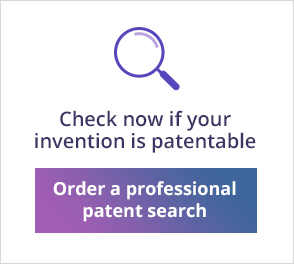
Learn how to bring a new product idea to market
Are you wondering how to bring a new product idea to market? It involves many aspects from many fields:
- Technological (developing a prototype and a full product etc.)
- Business and commercial (cost analysis, market research, business plan etc. )
- Logistical (production, shipping etc.)
Beyond those important aspects, an entrepreneur/ business manager must also consider the legal aspect – how to get patents that give comercial exclusivity in the markets you intend to operate in
If you wonder how to bring a new product idea to market, then obtaining a patent can sometimes be a crucial step in the process.
In this article we will discuss several aspects of how to patent an idea properly and more specifically what are the important steps to take before applying for a patent.
The importance of getting a patent
Patenting an idea gives the entrepreneur/ company two main benefits when looking for strategies on how to bring a new product idea to market –
- 20 years of total business and commercial exclusivity on the invention in the countries in which the patent was granted (patents are territorial – given by each and every country).
- Patents are considered an asset like any other tangible asset that can be commercialized & monetized on its own (i.e sell it, give license in return to royalties etc.)
Can you get a patent on an idea – what makes an invention patentable?
In order to patent an idea it must contain several basic traits:
- Novelty – the first condition a patent examiner will look for when trying to decide if to grant a patent application is whether the invention exists. Any product, patent, public patent application, an article, a book entry or even a detailed description in an internet post- are all considered prior publications that prove an invention is not new and therefore do not qualify patent protection.
- Inventive step (non-obviousness) – In many cases there are products/ patents/ other publications that are similar to your idea but not identical. In these cases you must convince the patent examiner that the differences between your idea and the existing publications are not trivial for skilled people in the trade.
- Industrial applicability and utility – You don’t need to build a working prototype in order to patent an idea, only to give a detailed description of the invention. However in most juresticions (Europe, UK, US and others) you can’t patent an idea based only on a method of doing business. The invention must be technologically/ scientifically applicable (an electrical appliance, machine, industrial process, chemical compound etc.) or contain such an element (i.e a method of doing business combined with some kind of technology).
The important steps recommended before you patent an idea
1. Technical/ technological/ commercial research
It is important to define the core of the invention. Ask yourself things like
- What are the main features that you want to protect?
- What problems/ needs does your invention solve/ answers and how does it do that?
- If and how these problems/issues are dealt nowadays?
- In what way your invention is different/ better from the existing products/ solutions
2. Business oriented research
Be sure to understand the following:
- What are your end goals (building a company around the invention or selling a patent),
- Who are your potential customers (individuals, Businesses, governments?)
- Where are your main markets and who are your competitors there?
Question like these will become crucial when deciding things like where to seek a patent and via what mechanism (see below)
3. Self patent research
Study as much as you can about patents in order to understand what are the implications to the process of bringing a new product idea to market. for example:
- What makes an invention qualified for a patent protection
- How to patent an invention (the legal process)
- What are the mechanisms for patent filing – national filing, PCT, US provisional etc (what are the pros and cons of each, what is the most suitable path for you etc.)

4. Patentability search via a patent search service
Patentability search (a.k.a “novelty/ prior art search”) are a type of an IP search done by, patent search experts using paid patent search engines/ databases such as DWPI, TotalPatent, STN, Patbase, Orbit questel etc.
A patentability search simulates the search that will be done by the patent examiners. There are many factors that make a professional patentability search crucial:
- Any former publication of the idea might cause your patent application to be rejected (see novelty above)
- Only a non trivial difference from what already exists makes an invention patentable (see “Inventive step” above)
- In order to patent an idea properly you must draft and file a patent application in relevant countries, according to your patent strategy, paying application and when the patent is granted, maintenance fees. That makes the whole process very costly – a patentability search costs only a fraction of these sums.
- The paid patent search tools (see above) contain a lot of data you can’t see in free open tools such as google parents, Escapenet, PATENTSCOPE etc.
- Once you file the first patent application you have a limited time to continue and submit it in other countries (12 or 30 months depending on the filing mechanism).
Many patent applications get rejected based on publications that can only be found in professional paid databases, or existing patents that use complicated legal language making it hard to be spotted by anyone who is not familiar with the patent legal language.
This kind of rejections can not only waste precious time but can also delay the whole process of bringing the new product to market (costing a lot of money) and in the worst case scenario might prevent any chance of getting a patent in the future.
5. Analyzing the patentability search with a patent attorney/agent and deciding if and how to proceed.
Depending on the patentability search report you and your patent attorney/ agent can decide how to continue. The main scenarios are
- Tuning your patent definition or changing it completely in order to achieve an inventive step compared to the report findings and then conducting another patentability search based on the changes.
- Decide to abandon the patent process, conduct a freedom to operate search and if there are no enforced patents on the idea continue to produce and sell it.
- Continue in the patenting process – draft and file.
- Discuss various strategies on how to bring a new product idea to market.

